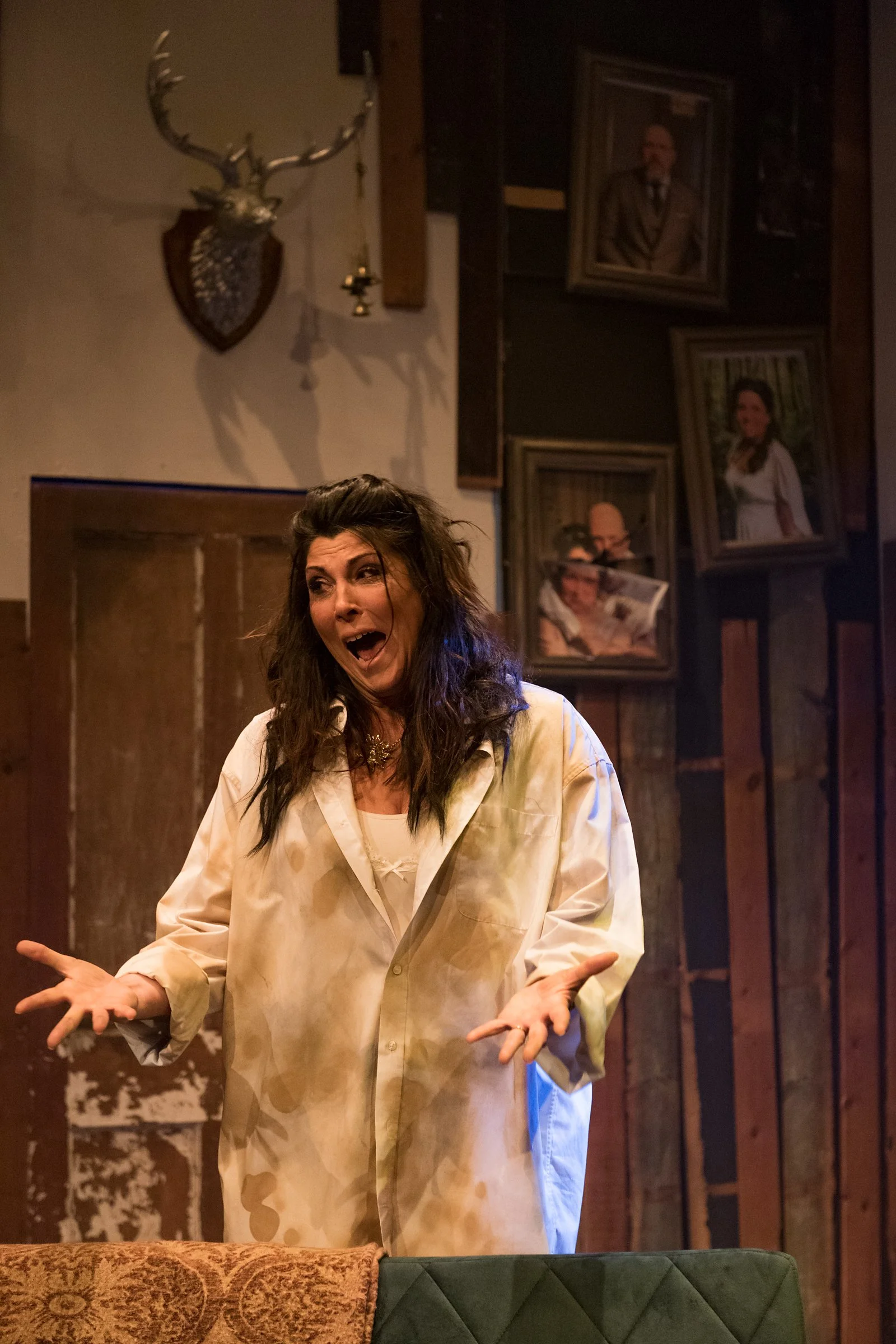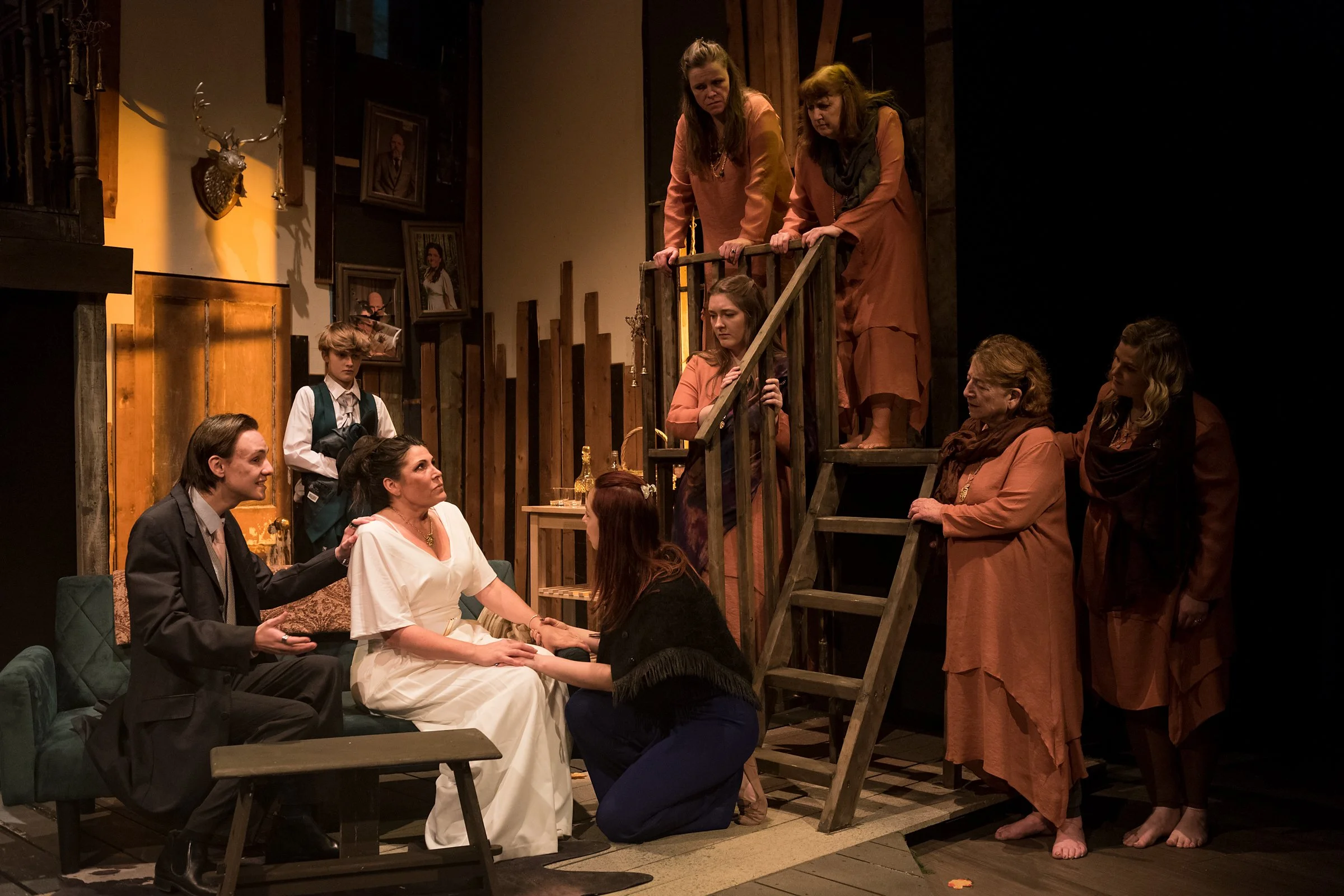Lighting The Unnatural
Unnatural lighting is something we as designers are taught to avoid, rather it is something that we unintentionally encounter when we disobey the rules of the three-point lighting system and colour theory that great designers of the past lived by. But when can unnatural lighting be used intentionally, when is it appropriate, and which methods should we use to blend it with the rest of the design whilst still having the desired effect on the audience, or should we? If we can answer these questions it opens up a whole new world of possibilities for influencing the emotional response to lighting in the theatre.
Craig (director) first approached me in the summer of 2024 about staging the new adaptation of “Medea” by Ben Power at The Loft Theatre. I was excited to work on the project and delve into the world of Greek tragedy for the first time. There is no doubt that Medea is a powerful piece and a shocking one too which comes with many challenges for the production team. One of these challenges was how to keep the emotion real and raw without exaggerating it and risk it becoming melodramatic. The lighting had a large part to play in this and subtly assumed the role of the narrator, moving the story along over the course of a single day, from dawn to dusk, as Greek plays were traditionally written.
However, the most important moments in the play are the interactions between Medea and the Chorus. In traditional Greek plays, the chorus is the mediator between the audience and the characters, interpreting the inner desires and intentions of the characters as the story unfolds. When reading the script for the first time, I couldn’t help interpreting the chorus as Medea’s conscience, a kind of angel or devil on her shoulder as she grapples with her inner convictions. This idea was discussed throughout the production process with the director and actors about how they interpreted their character’s role. We decided to flow with this idea and see where it would take us.
Knowing this, it was now important that the chorus was ever present but at the same time invisible and ethereal. My ideas culminated in the thought that the chorus would have their own style of lighting and that Medea would enter into the chorus’ world when she was alone with them. This is where the unnatural lighting felt appropriate with long shadows, harshly saturated colours, and silhouettes to represent the inside mind of Medea.
I ended up using two colours to represent the juxtaposing nature of Medea’s thoughts and convictions. The warm but unsettling L741 mustard yellow provided a golden hue but with added green to blend with the L075 moonlight colour. Together these two saturated tones became the colour scheme of the chorus and represented the inner turmoil in Medea’s mind.
Example of the “Chorus Lighting”
But using colour alone wouldn’t bring about that unsettling feeling in the audience. The angles of light are perhaps most important when creating unnatural effects. Low-side light, uplight, straight-down light, and backlight can all contribute to a feeling of uneasiness in the audience. In our day-to-day lives, we rarely encounter these angles in natural light, and when we do they often come from illuminating sources such as candlelight or fireplaces. As a result, we naturally assume darkness and mystery when presented with such angles. For this production, I focussed on side light and downlight to provide that unnatural look whilst still keeping it visually interesting. Of course you have to sacrifice visibility for such effects, but this is a conversation to be had with the director. Considering it was used in short segments of the play, the emotional effect outweighed the loss of clarity in this case and it fitted with the concept of the show as a whole.
Example of “Natural Lighting” used in Medea
Something we must not overlook when incorporating unnatural lighting into our designs is context. Not only the context of the play but also the context of the rest of the lighting design. Does it fit all together?
In the instance of “Medea”, the juxtaposition of the natural and unnatural lighting was supposed to be accentuated. Medea is pleasant when interacting with acquaintances through most of the play, but when she is alone she reveals her inner thoughts of evil and scheming. Reflecting this visually emphasises the fact she is a wolf in sheep's skin and prompts the audience to form their own opinions on her as a mother and wife. However, as with most Greek plays, the chorus is constantly present on stage and peers in from balconies and platforms. To blend the real world with the world inside Medea’s mind (represented by the chorus) I used the same mustard yellow colour as a high backlight on the chorus, so they cast a long shadow upon the action in the centre of the stage. This gave a nice continuity between the two lighting states and provided meaning to the chorus as they watched and listened just like us.
The chorus watch on
Throughout this project, I have learned how to use bold and exciting lighting subtly and effectively without it being jarring or overly stylised. I’ve realised how important it is to have a meaning behind each design decision that is consistent with the original concept of the play and to be intentional with every design choice I make.
I suppose that unnatural lighting does break the rules of lighting design, but when done effectively it can add emotion and meaning to a piece at deeper levels and help explore more nuanced meanings which are yet to be discovered.
How will you use this in your designs?



